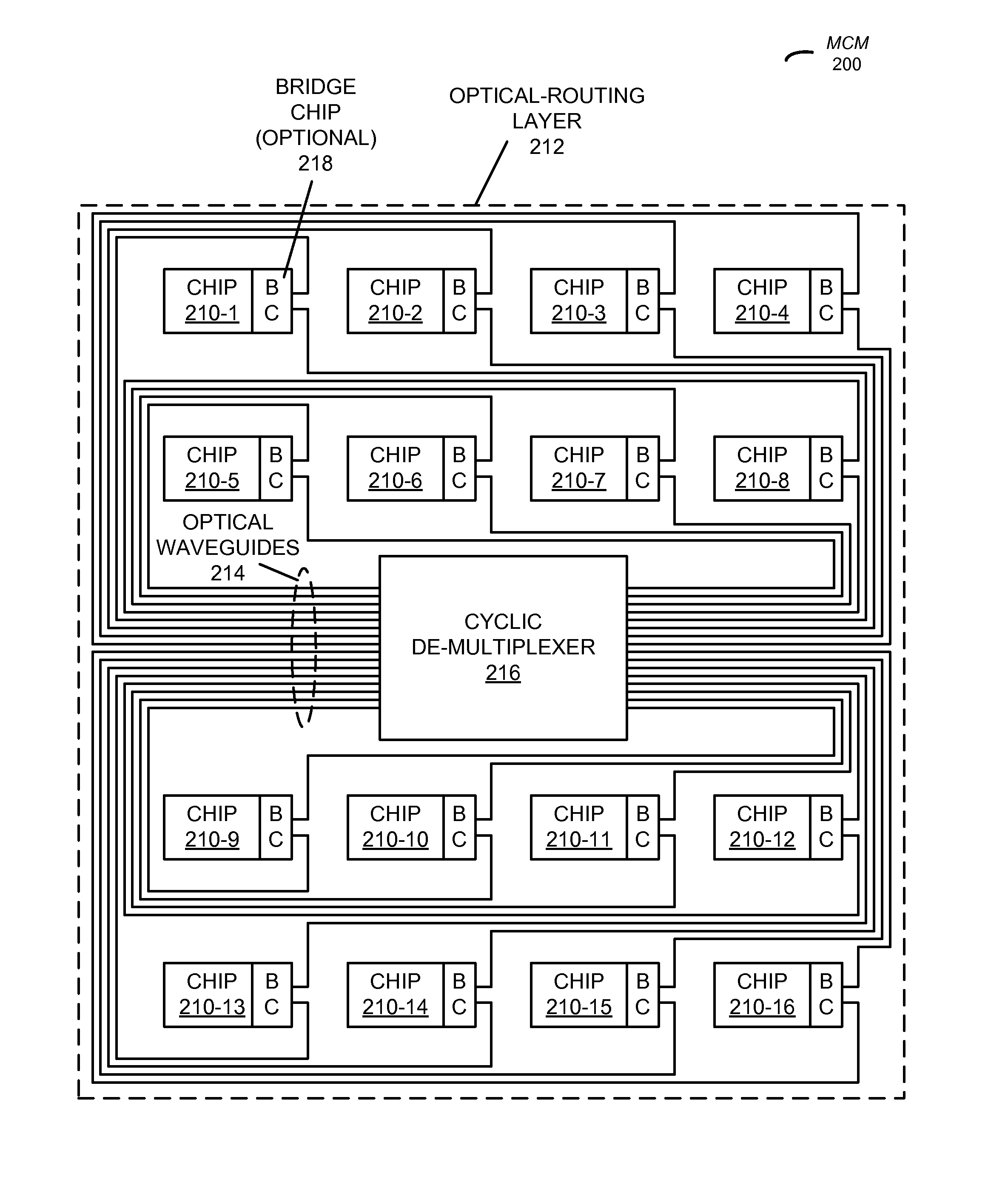Single- layer full-mesh, point-to-point network
a point-to-point network and single-layer technology, applied in the direction of instruments, optical waveguide light guides, optics, etc., can solve the problems of large link-loss budget, large number of optical waveguide crossings, and obstacle to the use of this technology
- Summary
- Abstract
- Description
- Claims
- Application Information
AI Technical Summary
Benefits of technology
Problems solved by technology
Method used
Image
Examples
Embodiment Construction
[0027]Embodiments of a multi-chip module (MCM), a system that includes the MCM, and a method for communicating among N chips in the MCM are described. This MCM may include a single optical routing layer that provides point-to-point connectivity among N chips in the MCM, such as all-to-all connectivity or full-mesh point-to-point connectivity. Moreover, the optical routing layer may include: N optical waveguides optically coupled to the N chips; and a cyclic de-multiplexer, optically coupled to the N optical waveguides, that routes optical signals among the N optical waveguides without optical waveguide crossing in the optical routing layer. For example, the cyclic de-multiplexer may include: an array-waveguide-grating (AWG) wavelength router and / or an echelle-grating wavelength router.
[0028]By interconnecting the N chips using the single optical routing layer, the MCM may not need non-blocking dedicated optical channels among the N chips, and may avoid optical-waveguide crossings an...
PUM
 Login to View More
Login to View More Abstract
Description
Claims
Application Information
 Login to View More
Login to View More - R&D
- Intellectual Property
- Life Sciences
- Materials
- Tech Scout
- Unparalleled Data Quality
- Higher Quality Content
- 60% Fewer Hallucinations
Browse by: Latest US Patents, China's latest patents, Technical Efficacy Thesaurus, Application Domain, Technology Topic, Popular Technical Reports.
© 2025 PatSnap. All rights reserved.Legal|Privacy policy|Modern Slavery Act Transparency Statement|Sitemap|About US| Contact US: help@patsnap.com



